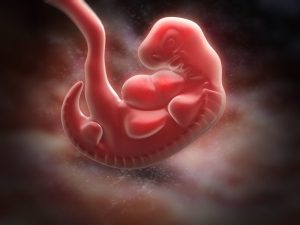What Is Photosynthesis And How Does It Work?

Photosynthesis is one of the most vital biological processes on Earth, enabling plants, algae, and some bacteria to harness the energy of sunlight to produce the organic compounds necessary for life. This process is foundational not only to the survival of these organisms but also to the entire ecosystem, as it provides the primary source of energy for nearly all living organisms and produces the oxygen that is essential for aerobic life. To fully appreciate the importance of photosynthesis, it is necessary to explore its complex mechanisms, the various factors that influence its efficiency, and its far-reaching impact on the environment.
1. What Is Photosynthesis?
Definition and Overview
Photosynthesis is a biochemical process that converts light energy, typically from the sun, into chemical energy stored in the form of glucose, a type of sugar. This process takes place primarily in the chloroplasts of plant cells, which contain the pigment chlorophyll. Chlorophyll plays a crucial role in capturing light energy and initiating the series of reactions that lead to the production of glucose. Photosynthesis is essential for autotrophic organisms, such as plants, algae, and certain bacteria, which produce their own food through this process.
Photosynthesis is not only critical for the survival of these organisms but also for the broader ecosystem. The glucose produced during photosynthesis serves as the primary energy source for the plant itself and forms the foundation of the food chain. Additionally, the process produces oxygen as a byproduct, which is released into the atmosphere and is vital for the respiration of most living organisms.
Importance of Photosynthesis
The significance of photosynthesis extends far beyond the individual organisms that perform it. It is responsible for several key processes that sustain life on Earth:
- Oxygen Production: Photosynthesis is the primary source of oxygen in the Earth’s atmosphere. Through the photolysis of water molecules during the light-dependent reactions, oxygen is produced and released, making the air breathable for aerobic organisms, including humans.
- Energy Source: Photosynthesis is the fundamental process that powers the food chain. The glucose and other carbohydrates produced by photosynthetic organisms are consumed by herbivores, which in turn are preyed upon by carnivores. Thus, the energy captured from sunlight drives the entire ecosystem.
- Carbon Sequestration: Photosynthesis plays a crucial role in the global carbon cycle by removing carbon dioxide from the atmosphere and converting it into organic matter. This process helps regulate atmospheric CO2 levels, mitigating the greenhouse effect and contributing to climate stability.
2. The Process of Photosynthesis
Photosynthesis is a complex, multi-step process that occurs in two main stages: the light-dependent reactions and the light-independent reactions, also known as the Calvin cycle. Each stage involves a series of biochemical reactions that work together to convert light energy into chemical energy and store it in glucose.
Light-Dependent Reactions
The light-dependent reactions, also known as the photochemical phase, take place in the thylakoid membranes of the chloroplasts. These reactions require direct sunlight to proceed and involve several key steps:
- Absorption of Light Energy: Chlorophyll and other pigments within the thylakoid membranes absorb light, primarily in the blue and red wavelengths. This absorbed light energy excites electrons in the chlorophyll molecules, raising them to a higher energy state.
- Photolysis of Water: The excited electrons are passed along an electron transport chain, a series of proteins embedded in the thylakoid membrane. To replace the electrons lost by chlorophyll, water molecules are split in a process known as photolysis. This splitting of water produces oxygen (O2), which is released as a byproduct, and also generates protons (H+) and electrons (e-).
- Formation of ATP and NADPH: As electrons move through the electron transport chain, their energy is used to pump protons across the thylakoid membrane, creating a proton gradient. This gradient drives the synthesis of ATP through a process called chemiosmosis, where protons flow back across the membrane through ATP synthase, generating ATP. Additionally, the electrons are eventually transferred to NADP+ to form NADPH, another high-energy molecule.
The ATP and NADPH produced during the light-dependent reactions provide the necessary energy and reducing power for the next stage of photosynthesis, the Calvin cycle.
Light-Independent Reactions (Calvin Cycle)
The Calvin cycle, also known as the dark reactions or the Calvin-Benson-Bassham cycle, occurs in the stroma of the chloroplasts. Unlike the light-dependent reactions, the Calvin cycle does not require direct sunlight and can proceed in light or darkness, provided that ATP and NADPH are available. The Calvin cycle involves three main stages:
- Carbon Fixation: The first step of the Calvin cycle is the fixation of carbon dioxide (CO2) from the atmosphere. CO2 molecules are captured by the enzyme ribulose-1,5-bisphosphate carboxylase/oxygenase (RuBisCO) and attached to a five-carbon sugar called ribulose bisphosphate (RuBP). This reaction produces an unstable six-carbon compound that immediately splits into two molecules of 3-phosphoglycerate (3-PGA).
- Reduction Phase: In the second phase, ATP and NADPH generated in the light-dependent reactions are used to convert 3-PGA into glyceraldehyde-3-phosphate (G3P), a three-carbon sugar. This reduction process involves the addition of energy and electrons, resulting in the formation of G3P, which can be used to synthesize glucose and other carbohydrates.
- Regeneration of RuBP: The final phase of the Calvin cycle involves the regeneration of RuBP, allowing the cycle to continue. Some of the G3P molecules produced in the reduction phase are used to regenerate RuBP, while the remainder can be utilized to produce glucose, starch, cellulose, and other organic molecules necessary for plant growth and energy storage.
The overall process of the Calvin cycle is a complex interplay of biochemical reactions that transform inorganic carbon dioxide into organic glucose, which serves as the primary energy source for the plant and, ultimately, for the entire ecosystem.
The Overall Chemical Equation
The overall chemical equation for photosynthesis can be expressed as:
6CO2 + 6H2O + light energy → C6H12O6 + 6O2This equation succinctly represents the transformation of carbon dioxide and water into glucose and oxygen, with the input of light energy.
3. Factors Affecting Photosynthesis
Photosynthesis is influenced by various environmental factors that can either enhance or inhibit the process. Understanding these factors is crucial for optimizing plant growth and agricultural productivity.
Light Intensity
Light intensity directly affects the rate of photosynthesis. As light intensity increases, the rate of photosynthesis also rises, up to a certain point known as the light saturation point. Beyond this point, the rate of photosynthesis plateaus because the photosynthetic apparatus becomes saturated with light, and other factors, such as CO2 concentration and temperature, become limiting. Insufficient light can severely limit the photosynthetic rate, leading to stunted plant growth and reduced yield.
Carbon Dioxide Concentration
Carbon dioxide is a critical reactant in the Calvin cycle, and its concentration in the environment can significantly impact the rate of photosynthesis. Under conditions of higher CO2 concentration, the rate of photosynthesis generally increases because more CO2 is available for fixation by RuBisCO. However, at extremely high levels of CO2, the rate may stabilize or even decrease due to the onset of photorespiration, a process that competes with photosynthesis and reduces its efficiency.
Temperature
Temperature affects the activity of the enzymes involved in photosynthesis, particularly RuBisCO. The rate of photosynthesis typically increases with temperature, reaching an optimal level at a certain point. However, if the temperature exceeds this optimal range, the enzymes can denature, leading to a decline in the rate of photosynthesis. Additionally, high temperatures can increase the rate of water loss through transpiration, further stressing the plant and reducing photosynthetic efficiency.
Water Availability
Water is essential for the light-dependent reactions of photosynthesis, particularly for the photolysis of water molecules. A shortage of water can lead to the closure of stomata, the tiny openings on the leaf surface that allow gas exchange. When stomata close, CO2 intake is reduced, limiting the Calvin cycle and the overall rate of photosynthesis. Prolonged water stress can lead to reduced plant growth, wilting, and, in severe cases, plant death.
Nutrient Availability
Certain nutrients, particularly nitrogen, phosphorus, and potassium, are vital for the synthesis of chlorophyll and the proper functioning of the photosynthetic machinery. A deficiency in these nutrients can lead to reduced chlorophyll content, lower photosynthetic rates, and decreased plant growth. Ensuring adequate nutrient availability is essential for maintaining high photosynthetic efficiency and maximizing crop yield.
4. Significance of Photosynthesis in the Ecosystem
Foundation of the Food Chain
Photosynthesis is the cornerstone of life on Earth, serving as the primary source of energy for almost all living organisms. The glucose and other carbohydrates produced by photosynthetic organisms (autotrophs) are consumed by herbivores (primary consumers), which in turn are preyed upon by carnivores (secondary and tertiary consumers). This flow of energy from the sun, through photosynthesis, and up the food chain sustains the vast majority of life forms on the planet.
Photosynthesis also supports the growth of plants that provide habitat, shelter, and food for countless other organisms. Forests, grasslands, and aquatic ecosystems all depend on photosynthetic organisms to maintain their complex web of life.
Oxygen Production and Atmospheric Regulation
One of the most critical byproducts of photosynthesis is oxygen. During the photolysis of water in the light-dependent reactions, oxygen is produced and released into the atmosphere. This oxygen is essential for the respiration of most aerobic organisms, including humans. The maintenance of the Earth’s oxygen levels over geological time scales is largely attributed to the continuous process of photosynthesis.
In addition to oxygen production, photosynthesis plays a vital role in regulating the Earth’s atmosphere by removing carbon dioxide, a greenhouse gas. By sequestering CO2 and converting it into organic matter, photosynthesis helps mitigate the effects of global warming and climate change. Forests and oceans, which house vast amounts of photosynthetic organisms, act as major carbon sinks, absorbing more CO2 than they release and helping to stabilize the global climate.
Carbon Cycle and Climate Regulation
Photosynthesis is a central component of the global carbon cycle, which involves the movement of carbon among the atmosphere, oceans, soil, and living organisms. By converting atmospheric CO2 into organic matter, photosynthesis reduces the concentration of this greenhouse gas in the atmosphere, thereby influencing the Earth’s climate. The carbon stored in plants and other photosynthetic organisms can remain in the ecosystem for varying lengths of time, depending on whether it is consumed, decomposed, or sequestered in long-lived structures such as wood.
When plants die and decompose, the carbon they contain is returned to the atmosphere as CO2, completing the carbon cycle. However, some of this carbon may become buried and stored in soil or sediments for long periods, contributing to the formation of fossil fuels over geological time scales.
Conclusion
Photosynthesis is an incredibly complex and essential process that sustains life on Earth by converting sunlight into chemical energy, producing oxygen, and forming the foundation of the food chain. Its role in regulating the atmosphere, supporting ecosystems, and maintaining the balance of the carbon cycle cannot be overstated. As we face increasing environmental challenges, such as climate change and habitat loss, understanding and preserving the process of photosynthesis becomes even more critical. By appreciating the intricacies and importance of photosynthesis, we can better appreciate the delicate balance of life on our planet and the need to protect the natural processes that sustain it.



